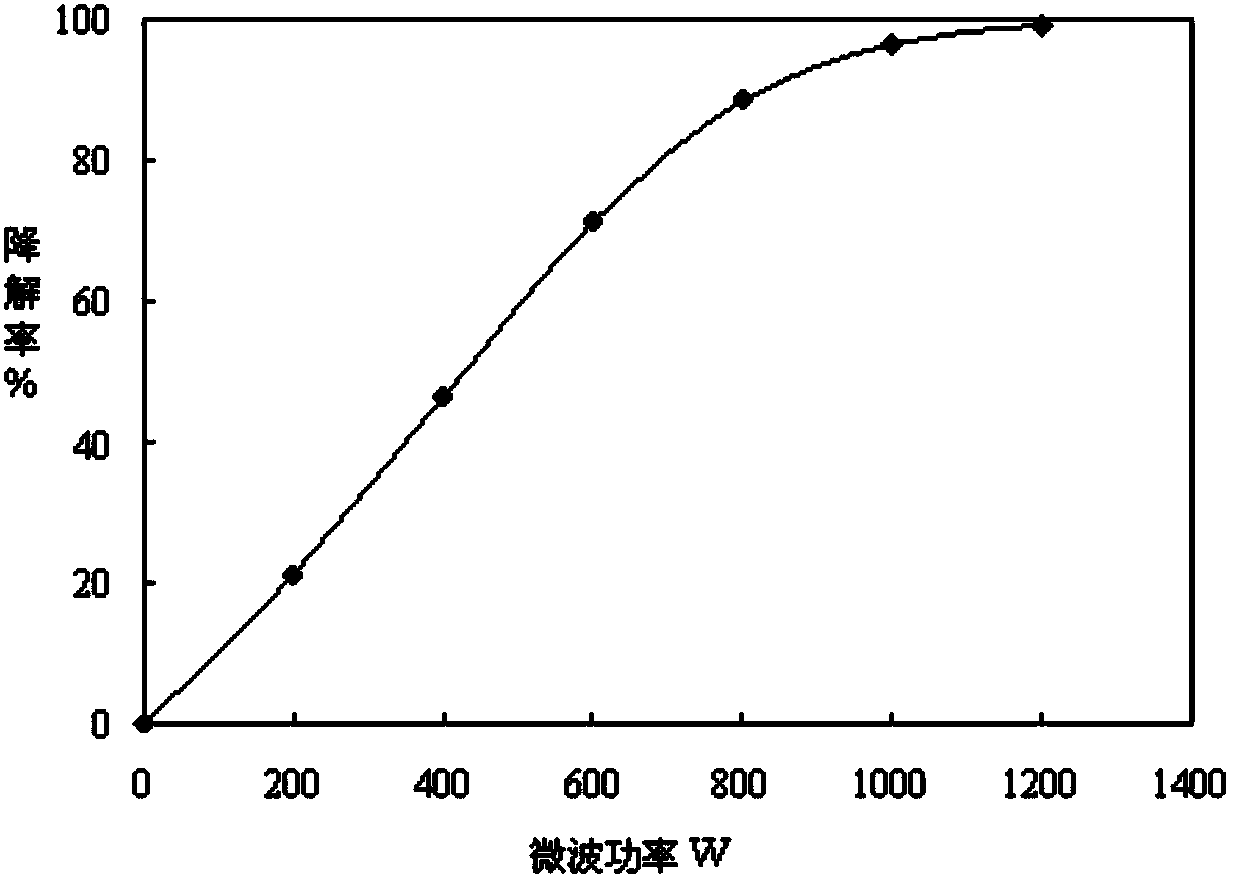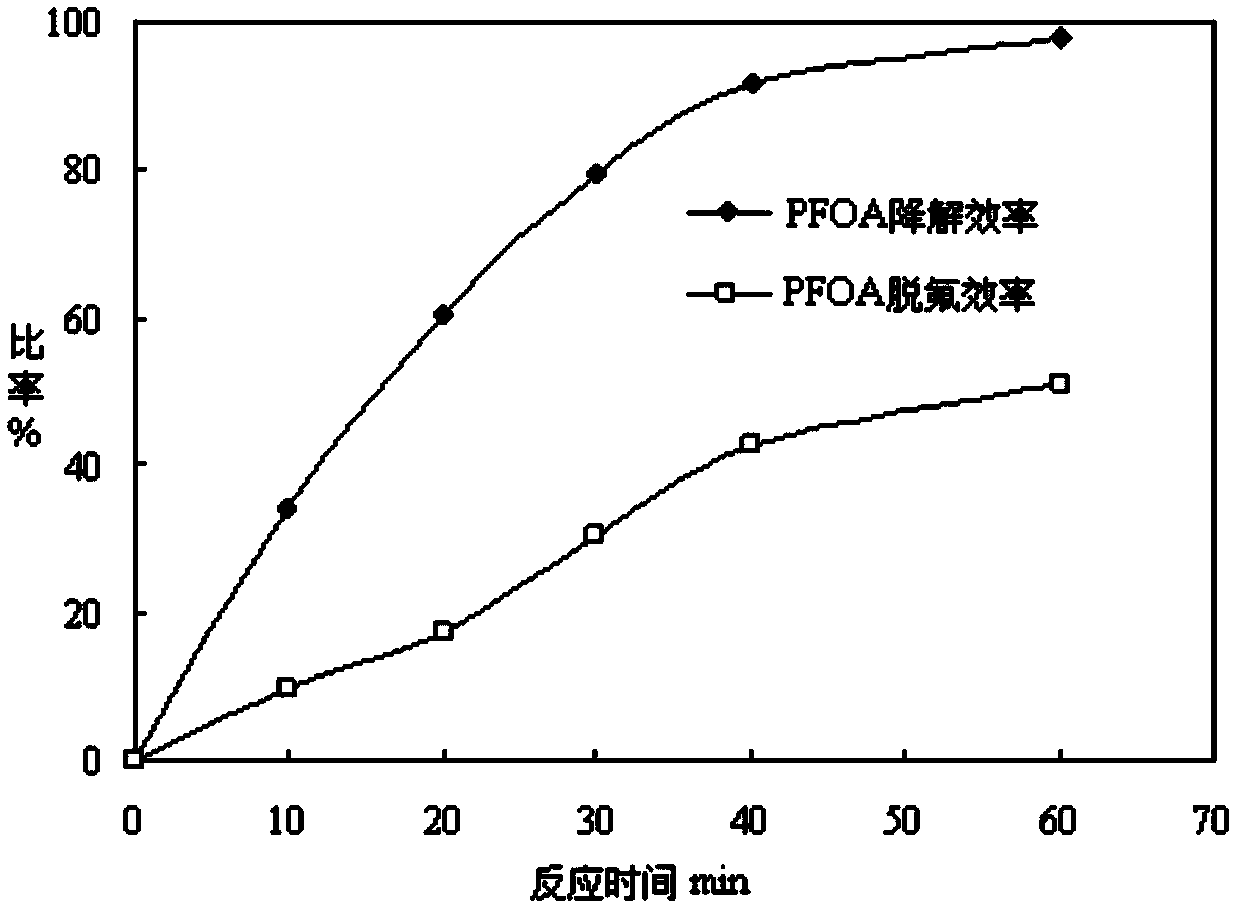Method for degrading perfluorocarboxylic acid pollutant by utilizing microwave radiation
A microwave radiation method, microwave radiation technology, applied in the direction of water pollutants, chemical instruments and methods, light water/sewage treatment, etc., can solve the problem of microwave radiation removal of perfluorocarboxylic acid pollutants that has not yet been seen, and the method is simple , no secondary pollution, short reaction half-life
- Summary
- Abstract
- Description
- Claims
- Application Information
AI Technical Summary
Problems solved by technology
Method used
Image
Examples
Embodiment 1
[0017] In this embodiment, the microwave digestion tank is used as the reactor, activated carbon is used as the microwave sensitization medium, and the microwave radiation method is used to degrade PFOA. The specific reaction process is as follows:
[0018] (1) Measure 50ml of PFOA aqueous solution with a concentration of 10mg / L, put the cleaned 80-100 mesh coconut shell activated carbon into the PFOA aqueous solution according to the weight ratio of activated carbon: PFOA aqueous solution (0.01-0.1): 1, and use magnetic stirring The device continued to stir for 50-70 minutes to obtain a mixed solution;
[0019] (2) Transfer the mixed solution obtained in step (1) to a microwave digestion tank lined with polytetrafluoroethylene to start the reaction, set the reaction time to 30-40 minutes, and the microwave radiation power to 800-1000W;
[0020] (3) Take 2ml samples every 5-10 minutes, use a centrifuge to separate the activated carbon in the sample, take the supernatant, then ...
Embodiment 2
[0022] Embodiment 2: the influence of microwave radiation power on PFOA degradation efficiency
[0023] In this example, according to the step (1) of Example 1, prepare six equal volumes of mixed solutions, and put them into microwave ovens respectively to start the reaction. The radiation power was 200W, 400W, 600W, 800W, 1000W and 1200W respectively, and the influence of microwave radiation power on the degradation efficiency of PFOA was tested. The results are as follows: figure 1 shown by figure 1 It can be seen that the degradation efficiency of PFOA increases with the increase of microwave radiation power. When the microwave radiation power is 1200W, the degradation efficiency of PFOA is as high as 99.1%. In the microwave radiation field, the water molecules, PFOA molecules and activated carbon in the reaction system Particles do violent irregular thermal motion instantly, increasing the microwave radiation power can increase the microwave radiation intensity of the rea...
Embodiment 3
[0024] Example 3: Effect of the amount of microwave sensitization medium (activated carbon) on the degradation efficiency of PFOA
[0025] In this example, six equal volumes of mixed solutions are prepared according to the step (1) of Example 1, and they are respectively put into a microwave oven to start the reaction. The microwave radiation power is set to 1000W, and the microwave radiation time is 40min. The weight ratio is 0.02:1, 0.05:1, 0.1:1, 0.2:1 and 0.3:1, respectively, and activated carbon is added to the PFOA aqueous solution, and the influence of the amount of activated carbon on the degradation efficiency of PFOA is investigated. The results are as follows: figure 2 shown. Depend on figure 2 It can be seen that the degradation efficiency of PFOA by microwave radiation increases with the increase of the amount of activated carbon. The number of PFOA molecules on the activated carbon increases accordingly. Activated carbon is a microwave-sensitized medium with ...
PUM
 Login to View More
Login to View More Abstract
Description
Claims
Application Information
 Login to View More
Login to View More - Generate Ideas
- Intellectual Property
- Life Sciences
- Materials
- Tech Scout
- Unparalleled Data Quality
- Higher Quality Content
- 60% Fewer Hallucinations
Browse by: Latest US Patents, China's latest patents, Technical Efficacy Thesaurus, Application Domain, Technology Topic, Popular Technical Reports.
© 2025 PatSnap. All rights reserved.Legal|Privacy policy|Modern Slavery Act Transparency Statement|Sitemap|About US| Contact US: help@patsnap.com



